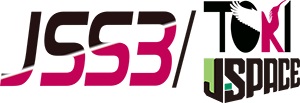Study on development of satellite-based ocean data assimilation system
JAXA Supercomputer System Annual Report April 2019-March 2020
Report Number: R19ER2402
Subject Category: Space Technology
- Responsible Representative: Riko Oki, Deputy Director, Earth Observation Research Center, Space Technology Directrate I
- Contact Information: Misako Kachi(kachi.misako@jaxa.jp)
- Members: Misako Kachi, Tsutomu Hihara, Hidenori Aiki, Shun Ohishi
Abstract
To enable satellite information ore familiar and easy to utilize, we develop “ocean forecast” without missing area by using the ocean model and data assimilation system with the highest spatial resolution (about 3km) in Japan to utilize satellite-based ocean, snow and ice products produced by JAXA at the maximum. At the same time, we promote studies on climate variations, with a focus on polar region, to improve accuracy of prediction of global warming and evaluation of its impacts.
Reference URL
Please refer to ‘Ocean Environment Monitoring | Earth Observation Priority Research | JAXA Earth Observation Research Center (EORC)‘.
Reasons and benefits of using JAXA Supercomputer System
The data assimilation system and model cannot execute in Linux computers generally used at EORC, since the regional ocean models are high spatial resolution (~1-3km), satellite data is assimilated to the system daily, and forecast three-dimensional ocean physical parameters about 10-80 days in future. Therefore, we need super computer to do this study.
Achievements of the Year
We established new nearshore systems with a horizontal resolution of 1/100 degree around the Chao Phraya and Mekong River to use of high-resolution GCOM-C/SGLI sea surface temperature. Also, we improved the existed western Pacific and southeast Asian coastal systems as bellows: to output each terms in the heat and salinity budget equations including the analysis increments, to implement Adaptive Observation Error Inflation (AOEI) and Relaxation-To-Prior Perturbation/Spread (RTPP/S) for computational stability, to modify setting of vertical layers for improvement of a mixed layer, and to investigate the impacts from additive inflation for prevention of shrink of ensemble spread leading to filter divergence.
We have integrated the one-way nest high-resolution data assimilation systems including western Pacific, southeast Asia coastal, the Chao Phraya and Mekong nearshore systems with a horizontal resolution of 1/12 degree, 1/36 degree, 1/100 degree, respectively. The nearshore systems demonstrated the data assimilation impacts of satellite sea surface temperatures and salinity. The new systems also showed substantial improvements in low sea surface temperature biases caused by high sensitivity to atmospheric forcing and unrealistic fields at each ensemble member. We also confirmed that additive inflation improves the shrink of ensemble spread leading to filter divergence.

Fig.1: Monthly-mean fields of the Chao Phraya River nearshore system in December 2015. Upper figures show sea surface temperature (color) and wind (vectors), and lower figures show sea surface salinity and river discharge (color on the ocean and land area, respectively) and sea surface height (contour). Left, middle, and right figures indicate satellite observations, simulation with data assimilation, and that without data assimilation, respectively.
Publications
– Invited Presentations
Ohishi, Shun, Tsutomu Hihara, Hidenori Aiki, Joji Ishizaka, Yasumasa Miyazawa, and Misako Kachi, ‘An LETKF-based ocean reanalysis for the Asia-Oceania region using Himawari-8 SSTs and SMOS/SMAP SSS’, JpGU Meeting 2019, Chiba, May 2019
– Oral Presentations
Ohishi, Shun, Tsutomu Hihara, Hidenori Aiki, Joji Ishizaka, Yasumasa Miyazawa, and Misako Kachi, ‘An LETKF-based ocean reanalysis for the Asia-Oceania region using Himawari-8 SSTs and SMOS/SMAP SSS’, GODAE Ocean View Symposium 2019-Ocean Predict ’19, Halifax, May 2019
– Poster Presentations
Ohishi, Shun, Tsutomu Hihara, Hidenori Aiki, Joji Ishizaka, Yasumasa Miyazawa, and Misako Kachi, ‘An LETKF-based ocean reanalysis for the Asia-Oceania region using Himawari-8 SSTs and SMOS/SMAP SSS’, The Joint PI Meeting of JAXA Earth Observation Missions FY2019, Tokyo, Jan. 2020
Ohishi, Shun, Tsutomu Hihara, Hidenori Aiki, Joji Ishizaka, Yasumasa Miyazawa, and Misako Kachi, ‘An LETKF-based ocean reanalysis for the Asia-Oceania region using Himawari-8 SSTs and SMOS/SMAP SSS’, Ocean Sciences Meeting 2020, San Diego, Feb. 2020
Usage of JSS2
Computational Information
- Process Parallelization Methods: MPI
- Thread Parallelization Methods: Automatic Parallelization
- Number of Processes: 20 – 40
- Elapsed Time per Case: 4 Minute(s)
Resources Used
Fraction of Usage in Total Resources*1(%): 0.94
Details
Please refer to System Configuration of JSS2 for the system configuration and major specifications of JSS2.
| System Name | Amount of Core Time(core x hours) | Fraction of Usage*2(%) |
|---|---|---|
| SORA-MA | 8,350,452.52 | 1.01 |
| SORA-PP | 0.00 | 0.00 |
| SORA-LM | 0.00 | 0.00 |
| SORA-TPP | 0.00 | 0.00 |
| File System Name | Storage Assigned(GiB) | Fraction of Usage*2(%) |
|---|---|---|
| /home | 42.92 | 0.04 |
| /data | 83,866.16 | 1.44 |
| /ltmp | 8,789.07 | 0.75 |
| Archiver Name | Storage Used(TiB) | Fraction of Usage*2(%) |
|---|---|---|
| J-SPACE | 0.00 | 0.00 |
*1: Fraction of Usage in Total Resources: Weighted average of three resource types (Computing, File System, and Archiver).
*2: Fraction of Usage:Percentage of usage relative to each resource used in one year.
JAXA Supercomputer System Annual Report April 2019-March 2020


